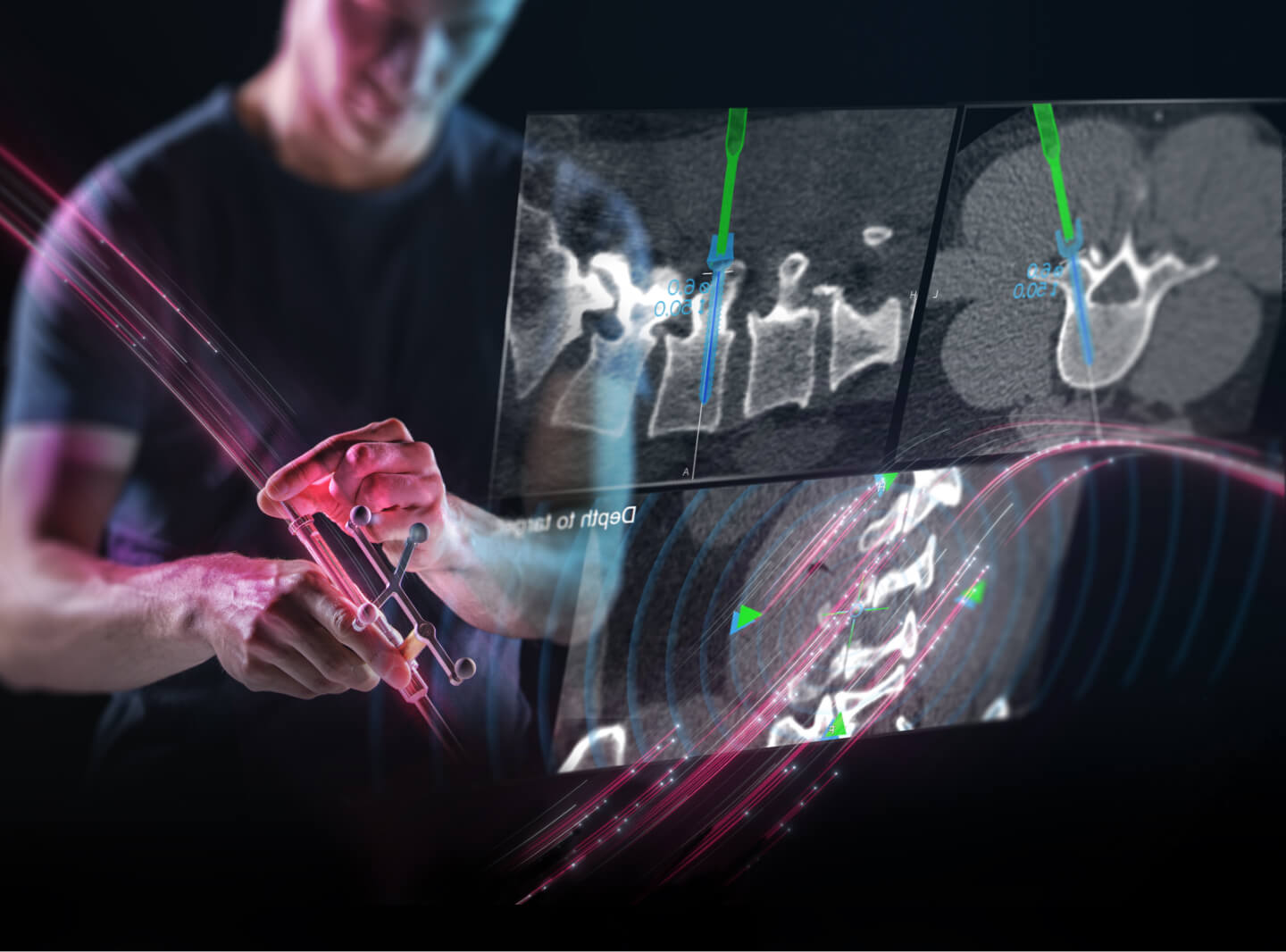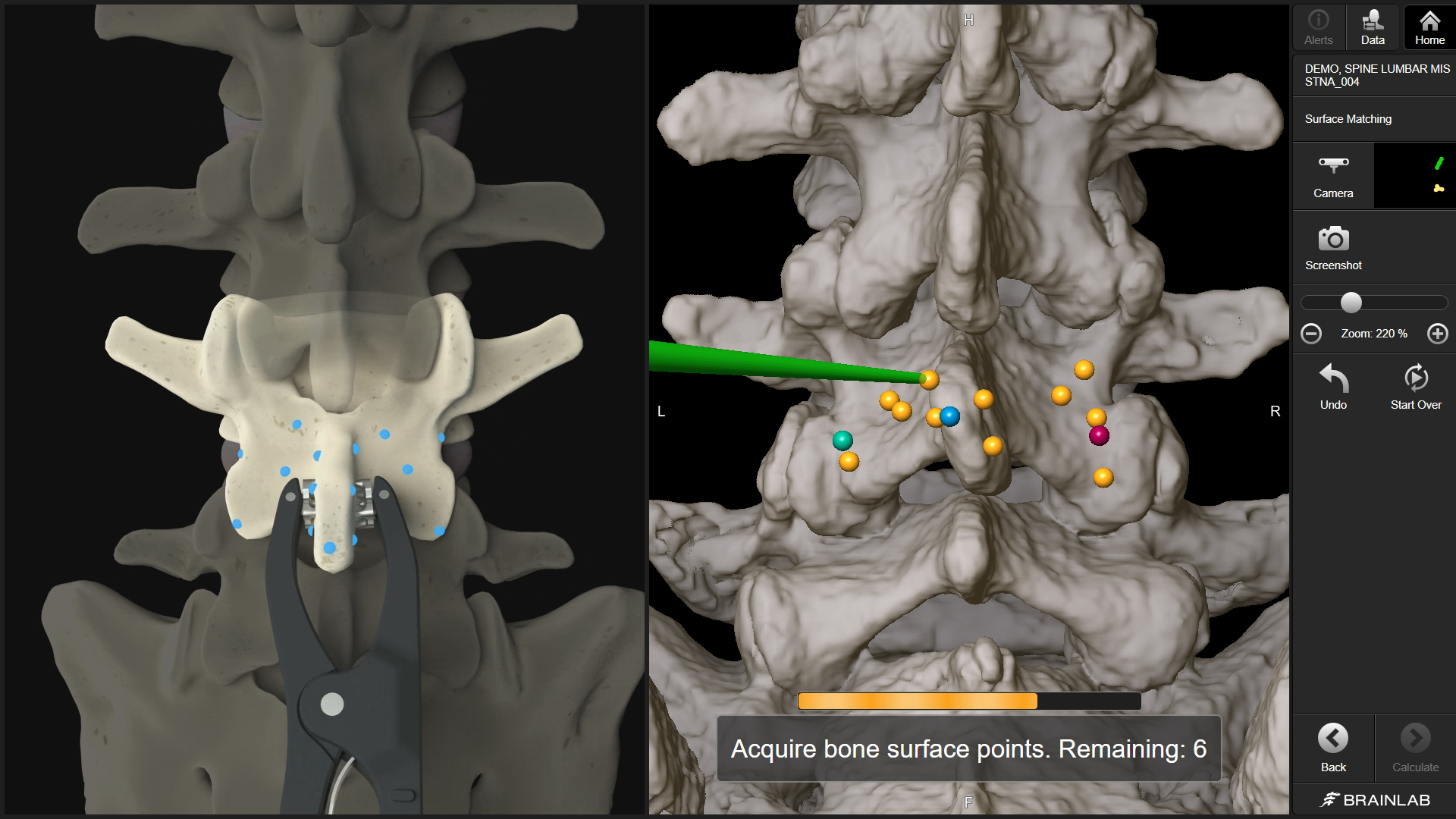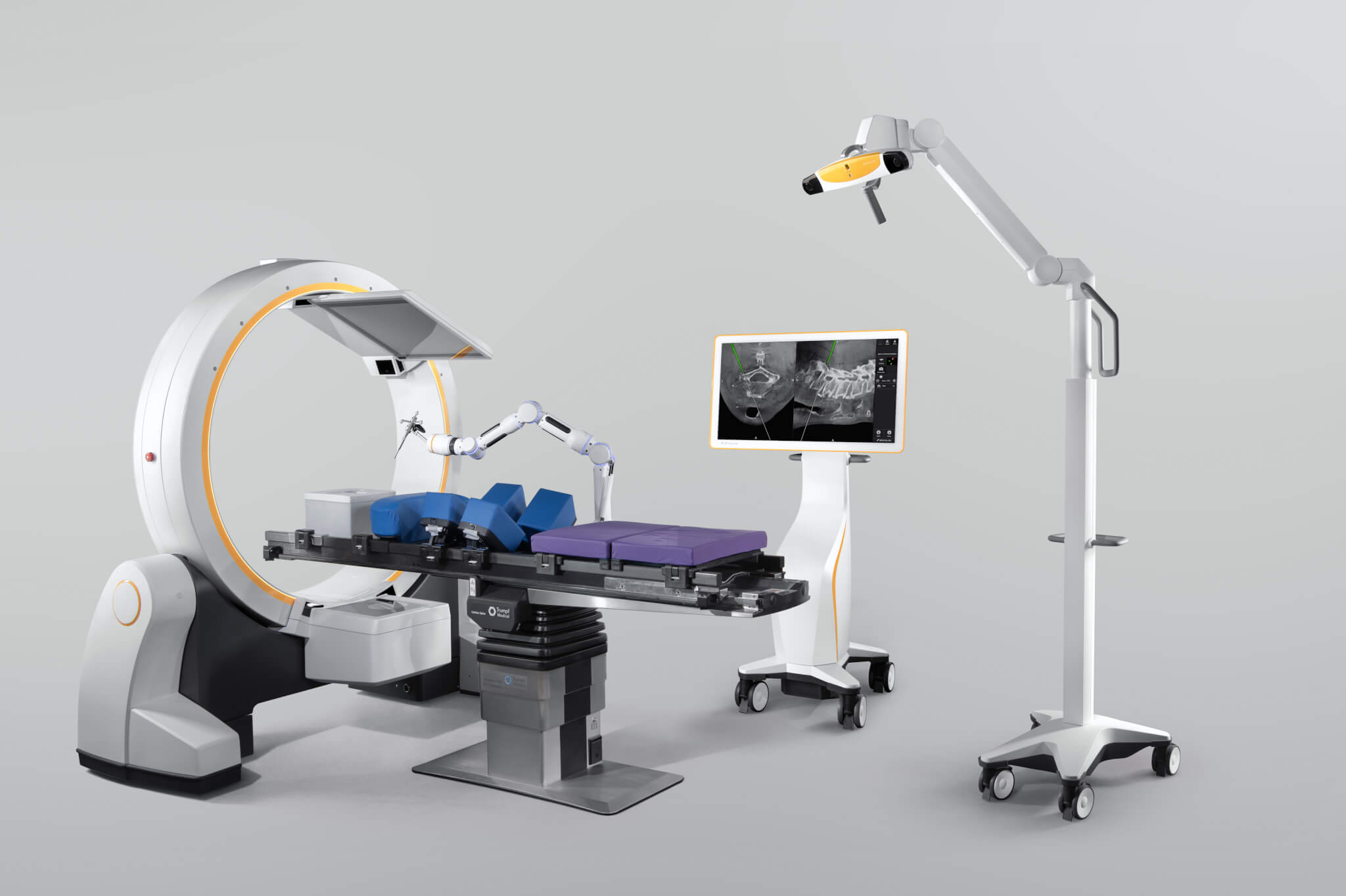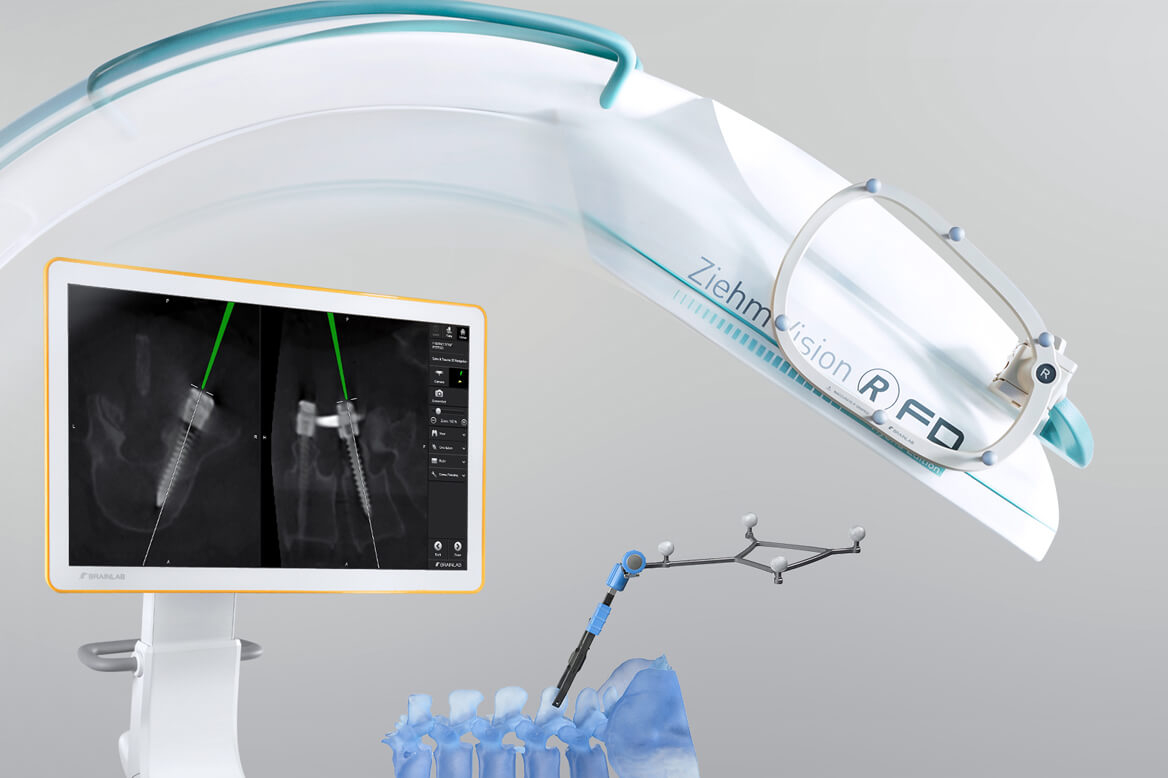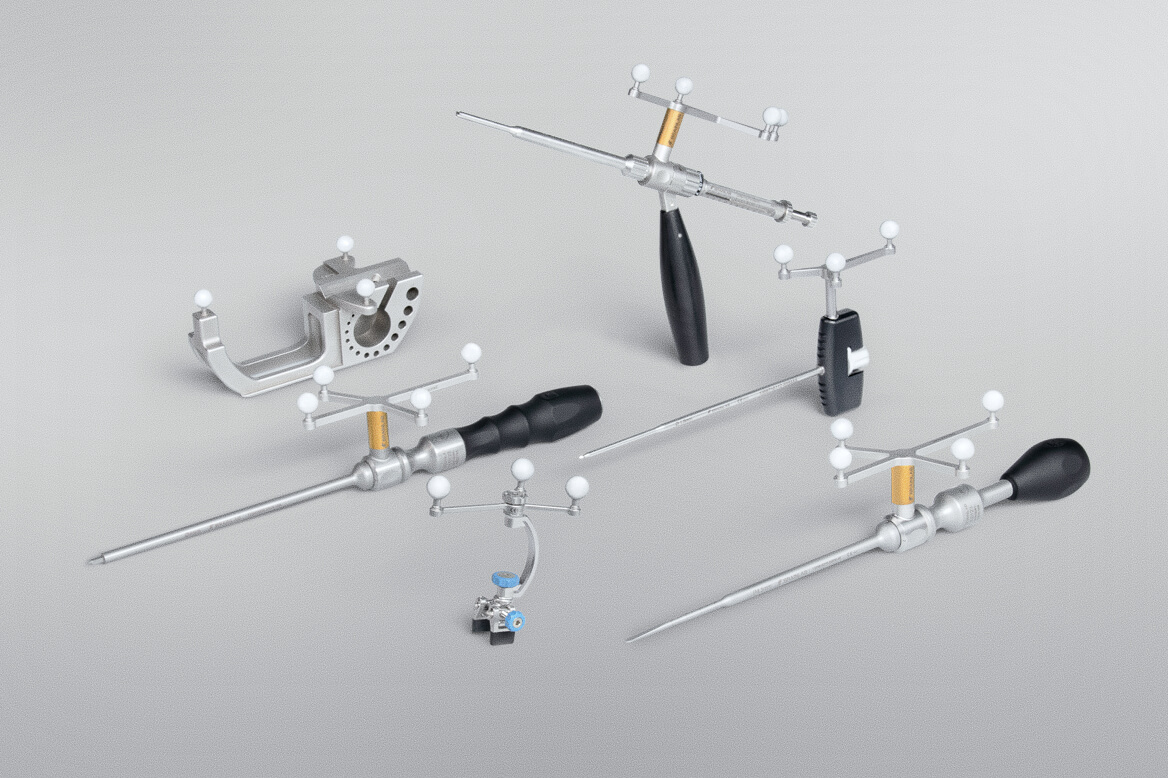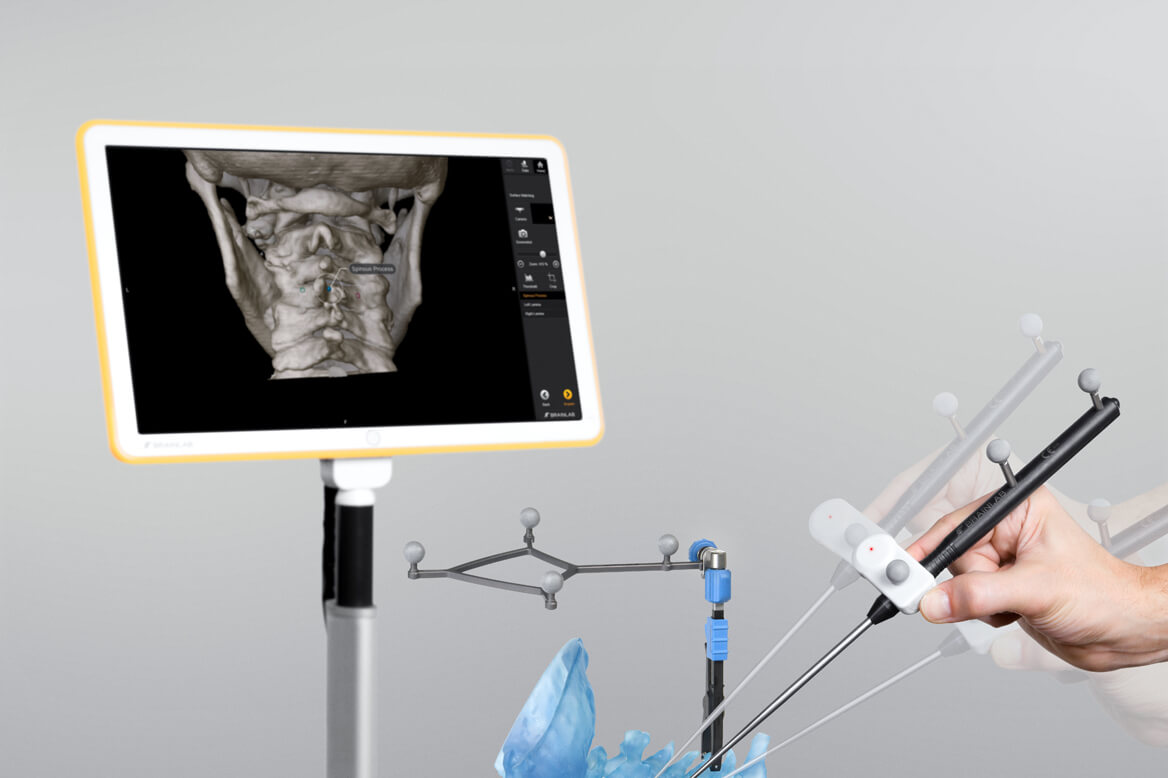Navigation Software Spine & Trauma
Streamlines Your Spine Workflow
Now, more than ever, Spine & Trauma navigation software acts as a central data hub as it seamlessly switches between applications, which is particularly important for robotic workflows using Cirq and/or Loop-X.
Navigation support in spine is well-established and is ideal for a broad range of indications, such as cervical fusion, complex deformity correction, tumor removal and trauma.
More Accuracy, Less Radiation
Spine Navigation delivers accurate pedicle screw and interbody placement. This efficiency and precision enables a drastic reduction of X-Ray exposure.
Increased accuracy1,2
Spine Navigation delivers more accurate pedicle screw placement compared to conventional surgical techniques. Navigate implants and instruments on 2D images, 3D scans, MR or CT datasets in all stages of surgery.
Brainlab Spine Navigation:
Enables accurate planning of incisions and trajectories with any instrument
Supports implant placement, such as cages and pedicle screws, especially in anatomically critical areas
Guides posterior incision and facilitates minimally invasive surgeries
Decreased X-Ray Exposure3,4
By requiring fewer verification scans due to precision instrument tracking, Brainlab Spine Navigation leads to reduced X-Ray exposure to the surgical team and the patient. Visualize incisions and trajectories in real-time and plan with any instrument at skin level.
Reduce X-Ray exposure to surgical team
Plan incisions and trajectories at skin level
Visualize instruments on 2D images, 3D scans, MR or CT scans in real time
Guiding the Surgeon’s Expertise
Spine navigation amplifies the surgeon’s extensive skill and experience.
The software works in tandem with the surgeon to provide additional insights and guidance.
Workflow Spine and Interbody Navigation
Flexible registration methods
Navigation
On the fly planning
Instrument set up
Interbody navigation
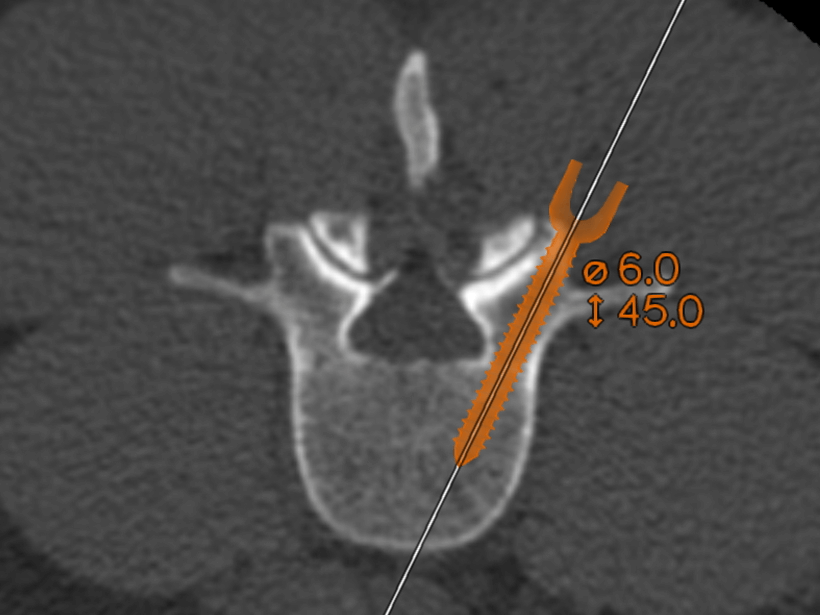
Navigate on any type of image data such as CT, MR, fluoro 3D and 2D Loop-X images, to incorporate critical information into navigation.
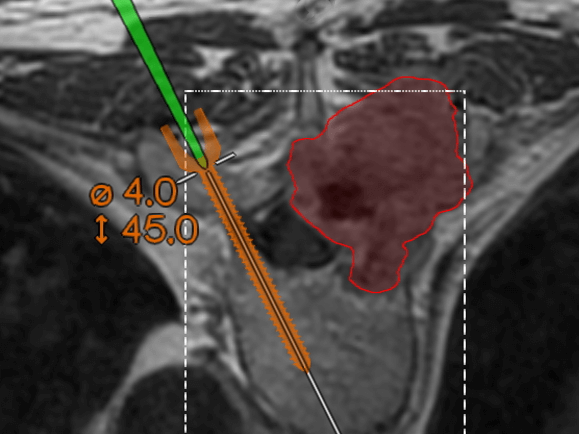
Import pre-planned objects, like screws with trajectories and contoured tumors, to add context.
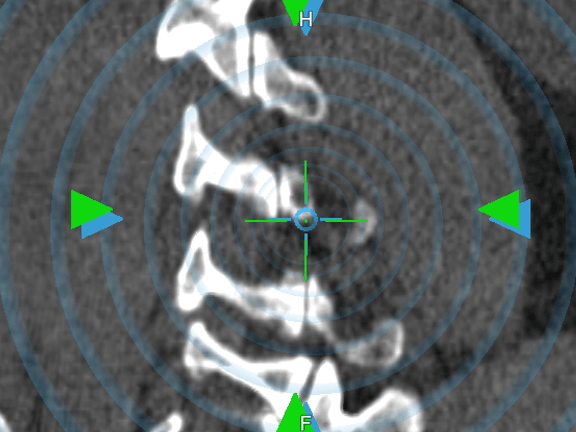
Degenerative cases
For routine degenerative procedures, you can intraoperatively plan pedicle screws with the help of the instrument tip offset tool. Your entry points and trajectories can be planned and stored even before the first incision. Once planned, let autopilot mode guide you to your intended destination.
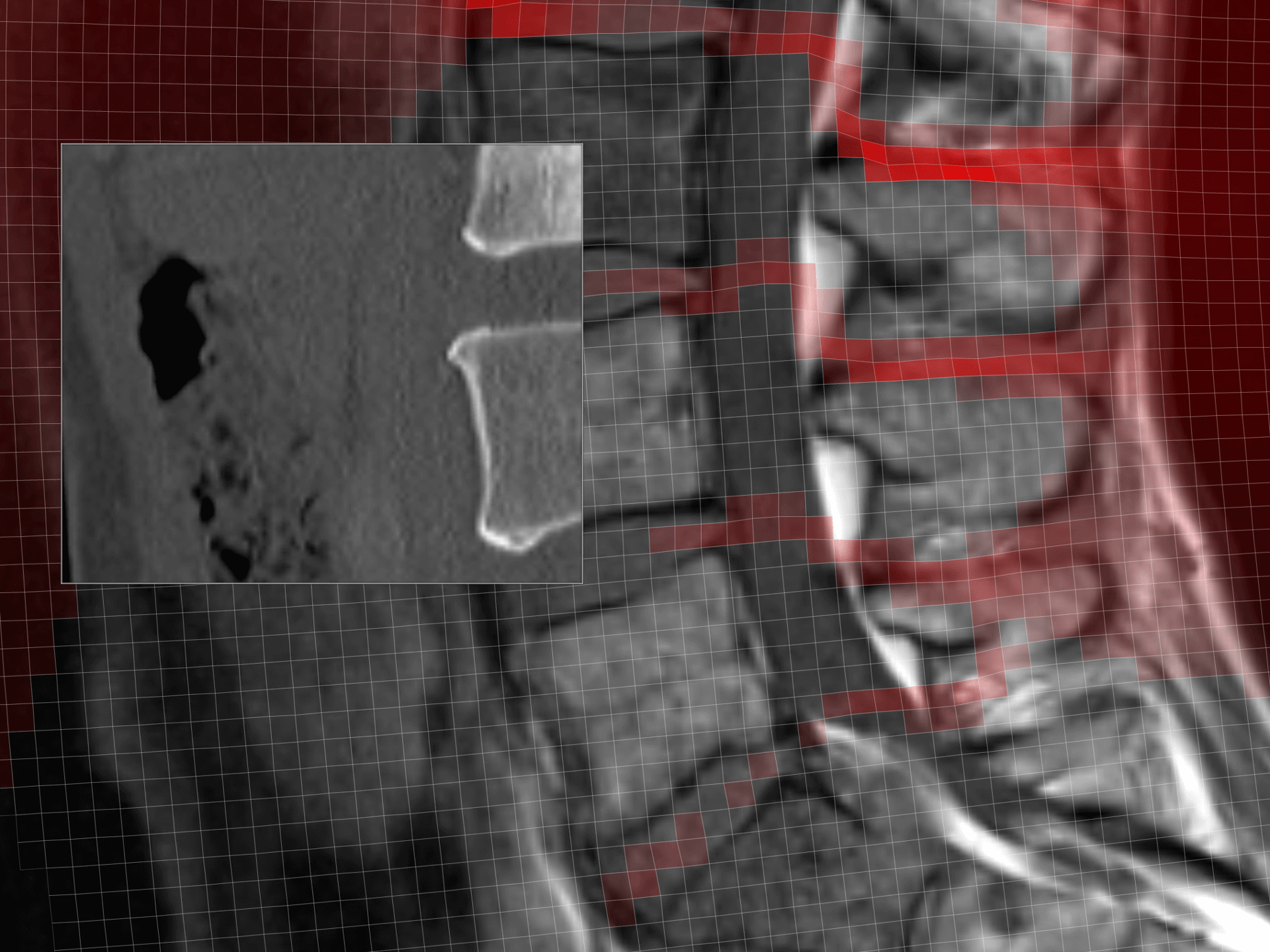
Deformity correction
During deformity cases such as scoliosis, you can navigate on more than one dataset simultaneously to bring together all the preoperative information you need. Fusion applications adapt your preoperative plans to the patient’s intraoperative position while saving time and radiation exposure from additional intraoperative scans.
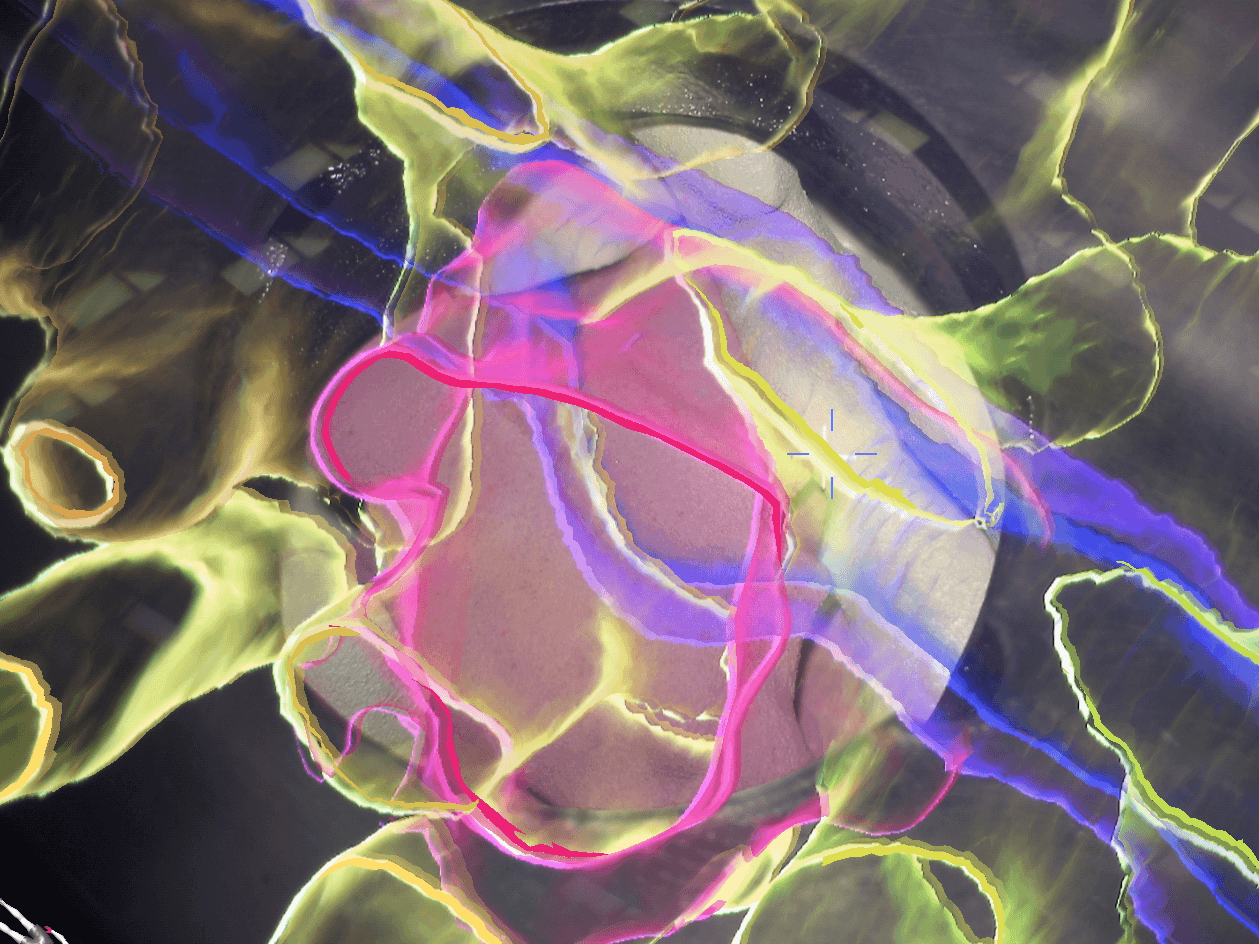
Tumor resection
3D objects visible below the surface enhance precise approach planning, add context and give a further understanding of the patient’s anatomy, allowing you to make informed decisions with live updates during surgery.
Navigation for Every Surgeon
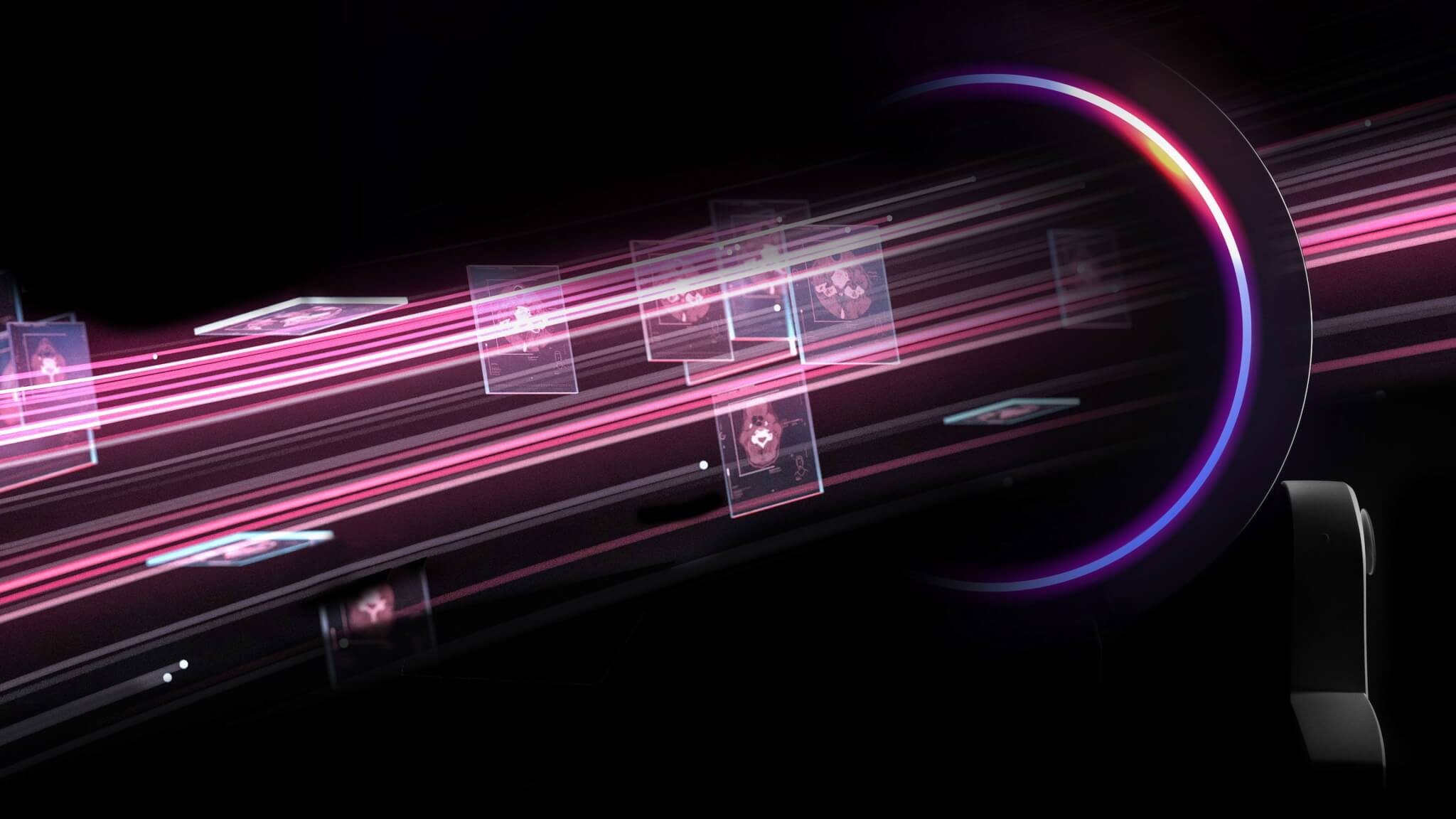
Closing the Loop
Opening New Horizons in Digital Spine Surgery
With our vision for the future of digital spine surgery, Brainlab is closing the loop to enable greater freedom for clinicians and enhanced outcomes for patients.
Are you ready to arrive at your desired spine outcomes more efficiently?
Navarro-Ramirez, Rodrigo; Lang, Gernot; Lian, Xiaofeng; Berlin, Connor; Janssen, Insa; Jada, Ajit et al. (2017): Total Navigation in Spine Surgery; A Concise Guide to Eliminate Fluoroscopy Using a Portable Intraoperative Computed Tomography 3-Dimensional Navigation System. In World neurosurgery 100, pp. 325–335
Matityahu, Amir; Kahler, David; Krettek, Christian; Stöckle, Ulrich; Grutzner, Paul Alfred; Messmer, Peter et al. (2014): Three-dimensional navigation is more accurate than two-dimensional navigation or conventional fluoroscopy for percutaneous sacroiliac screw fixation in the dysmorphic sacrum: a randomized multicenter study. In Journal of orthopaedic trauma 28 (12), pp. 707–710
Schuetze, Konard; Eickhoff, A.; Dehner, C.; Schultheiss, M.; Gebhard, F.; Richter, P. H. (2019): Radiation exposure for the surgical team in a hybrid-operating room. In Journal of robotic surgery 13 (1), pp. 91–98
Konieczny, Markus R.; Krauspe, Rüdiger (2019): Navigation Versus Fluoroscopy in Multilevel MIS Pedicle Screw Insertion: Separate Analysis of Exposure to Radiation of the Surgeon and of the Patients. In Clin Spine Surg 32 (5), E258-E265
